What is a Pumping Station?
Have you ever wondered how water gets from one place to another?
Whether it’s supplying water to your home or removing wastewater from your neighbourhood, pumping stations play a crucial role in ensuring that water flows smoothly where it’s needed.
But exactly what is a pumping station, and how does it work?
In this article, we’ll explore what pumping stations are, how they work, and where they’re used.
Also we’ll cover their pros and cons, and what alternatives to pumping stations exist.
Article Chapters
What is a Pumping Station?
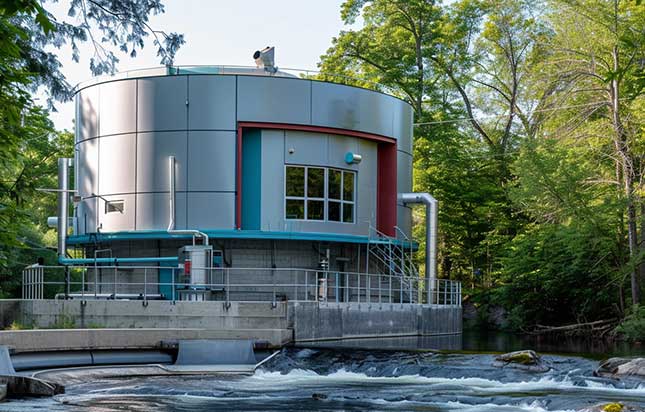
A pumping station, also known as a pump station, is a facility designed to move fluids from one place to another.
These fluids can include water, wastewater, sewage, or other liquids.
Pumping stations are equipped with pumps and other equipment that help increase the pressure and flow of fluids within pipelines.
Pumping stations are essential for overcoming differences in elevation, pressure, or distance, allowing fluids to be transported efficiently through pipelines.
They play a crucial role in various applications, including water supply, wastewater management, flood control, and industrial processes.
How Does a Pumping Station Work?
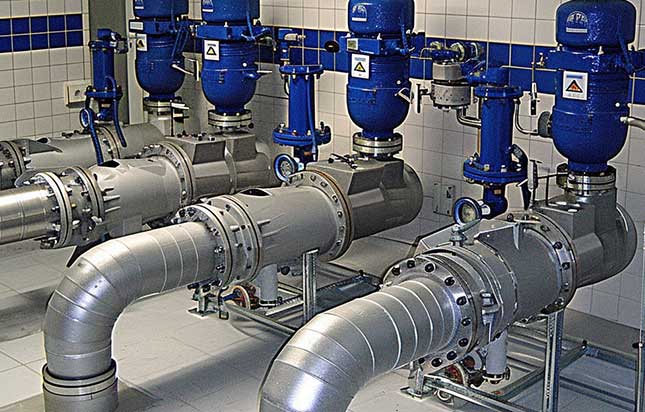
Pumping stations play a crucial role in moving fluids from one place to another, whether it’s supplying water to homes or businesses, managing wastewater and sewage, or controlling flooding during heavy rainfall. But how do pumping stations actually work?
Pumping Equipment
At the heart of every pumping station are the pumps themselves.
These pumps are responsible for increasing the pressure and flow of fluids within pipelines, allowing them to be transported efficiently from one location to another.
Fluid Intake
Fluid enters the pumping station through intake pipes connected to the source of the fluid, such as a reservoir, well, or drainage system.
The pumps draw the fluid into the station, creating suction and increasing the pressure to move it through the system.
Pumping Action
Once inside the pumping station, the fluid passes through one or more pumps, which are powered by electric motors, engines, or other sources of energy.
As the pumps operate, they increase the pressure and flow of the fluid, allowing it to be transported through pipelines to its destination.
Discharge
After passing through the pumps, the fluid is discharged from the pumping station through outlet pipes connected to the distribution system.
The increased pressure and flow created by the pumps allow the fluid to be transported over long distances and across varying elevations with minimal energy consumption.
Monitoring and Control
Pumping stations are equipped with monitoring and control systems that allow operators to monitor fluid levels, pressure, and flow rates within the system.
These systems help ensure that the pumping station operates efficiently and reliably, and allow operators to respond quickly to any issues or malfunctions.
Where are Pumping Stations Used?
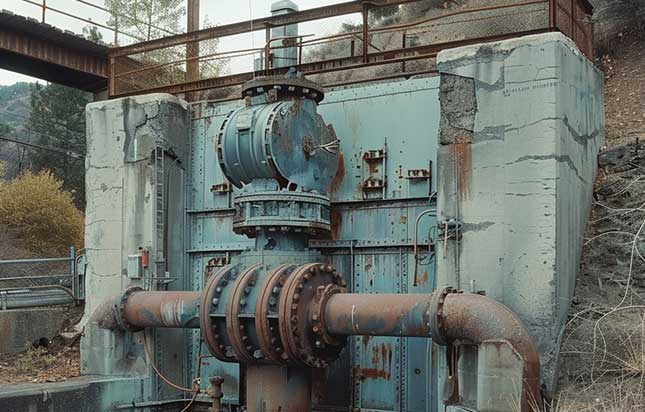
Pumping stations are used in a wide range of applications to move fluids from one place to another.
Some common uses of pumping stations include:
Water Supply
Pumping stations are used to transport drinking water from treatment plants to homes, businesses, and other locations.
They help maintain water pressure in distribution systems and ensure that clean, safe water is available whenever it’s needed.
Wastewater Management
Pumping stations are used to collect and transport wastewater and sewage from homes, businesses, and industrial facilities to treatment plants.
They help prevent backups and overflows, protect public health, and ensure that wastewater is treated properly before being discharged into the environment.
Flood Control
Pumping stations are used to remove excess water from stormwater drainage systems during heavy rainfall or flooding events.
They help prevent flooding, protect property and infrastructure, and ensure that communities remain safe and dry.
Industrial Processes
Pumping stations are used in various industrial processes, such as mining, agriculture, and manufacturing, to transport liquids such as chemicals, petroleum, and wastewater.
They help maintain production levels, ensure worker safety, and protect the environment from pollution and contamination.
Irrigation
Pumping stations are used in agricultural irrigation systems to transport water from rivers, lakes, or reservoirs to farmland.
They help ensure that crops receive an adequate supply of water, even during dry periods, and help maximise crop yields and profits for farmers.
What are the Advantages to Pumping Stations?
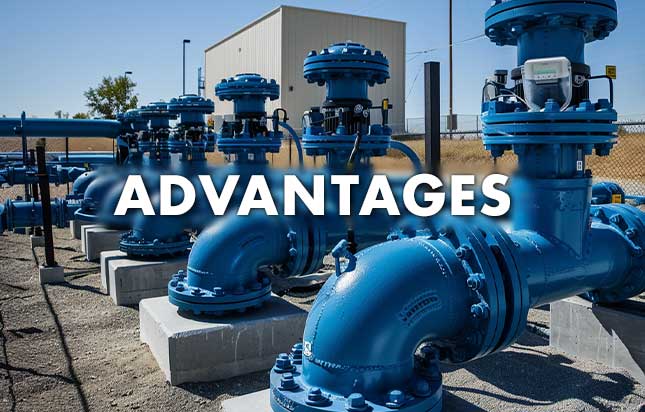
Pumping stations offer several advantages that make them essential for transporting fluids efficiently and reliably in a wide range of applications:
Efficiency
Pumping stations allow fluids to be transported over long distances and across varying elevations with minimal energy consumption.
By increasing the pressure and flow of fluids within pipelines, pumping stations ensure that fluids reach their destination quickly and efficiently.
Reliability
Pumping stations are equipped with backup systems and redundancies to ensure continuous operation, even during power outages or equipment failures.
This ensures that fluids are transported reliably and that there are no interruptions in service.
Flexibility
Pumping stations can be designed and configured to meet the specific needs of a wide range of applications, from water supply to wastewater management.
They can be customised with different types of pumps, control systems, and other equipment to ensure optimal performance and efficiency.
Scalability
Pumping stations can be scaled up or down to accommodate changes in demand or capacity.
Whether it’s increasing the capacity of a water treatment plant or expanding a stormwater drainage system, pumping stations can be easily modified or upgraded to meet changing requirements.
Environmental Benefits
Pumping stations can help reduce the environmental impact of transporting fluids by minimising the need for trucking or other forms of transportation.
By using pipelines and pumps to transport fluids, pumping stations help reduce air pollution, traffic congestion, and greenhouse gas emissions.
What are the Disadvantages to Pumping Stations?
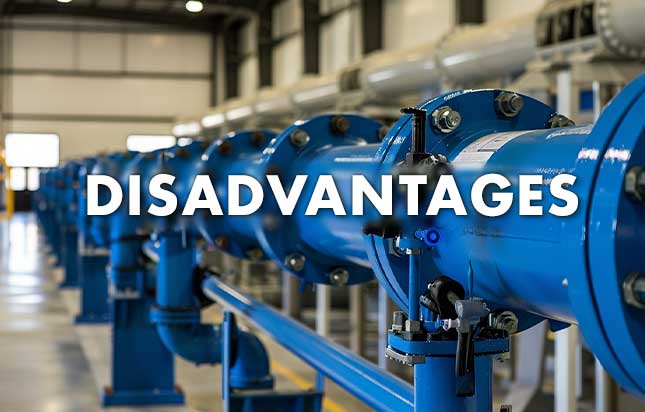
While pumping stations offer many advantages, they also have some disadvantages that need to be considered:
Energy Consumption
Pumping stations require a significant amount of energy to operate, particularly when pumping fluids over long distances or to higher elevations.
This energy consumption can contribute to greenhouse gas emissions and environmental pollution, particularly if the energy comes from non-renewable sources such as fossil fuels.
Maintenance Costs
Pumping stations require regular maintenance and upkeep to ensure they operate efficiently and reliably.
This can include tasks such as inspecting and repairing pumps, motors, and other equipment, as well as cleaning and maintaining pipelines and other infrastructure.
The cost of maintenance can be significant and can add up over time, particularly for large or complex pumping stations.
Environmental Impact
Pumping stations can have a negative impact on the environment, particularly if they are not properly maintained or operated.
For example, leaks or spills from pumping stations can contaminate water sources, disrupt aquatic ecosystems, and harm wildlife.
In addition, the energy consumption associated with pumping stations can contribute to air and water pollution, as well as habitat destruction and other environmental damage.
Potential for Failure:
Pumping stations are complex systems that rely on a variety of mechanical, electrical, and hydraulic components to operate effectively.
As a result, there is always the potential for equipment failure, malfunctions, or other issues that can disrupt service and cause downtime.
This can be particularly problematic in critical applications such as water supply, wastewater management, and flood control, where interruptions in service can have serious consequences.
What are the Alternatives to Pumping Stations?
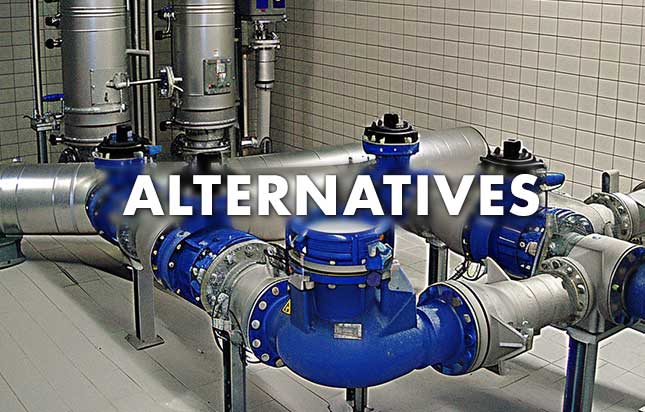
While pumping stations are commonly used to transport fluids such as water, wastewater, and sewage, there are several alternative methods that can be used in certain situations:
Gravity Systems
Gravity-based systems rely on the natural force of gravity to move fluids through pipelines.
By taking advantage of differences in elevation, gravity systems can transport fluids without the need for pumps, reducing energy consumption and operating costs.
Gravity systems are often used in applications where there is a significant difference in elevation between the source and destination of the fluid, such as in water distribution systems or sewage collection networks.
Syphon Systems
Syphon systems use the principle of atmospheric pressure to create a vacuum that draws fluids through pipelines.
By creating a pressure differential between the inlet and outlet of the syphon, fluids can be transported without the need for pumps.
Syphon systems are often used in applications where it is not feasible to use gravity-based systems, such as in hilly or mountainous terrain.
Hydraulic Ram Pumps
Hydraulic ram pumps use the energy of flowing water to pump a smaller portion of that water to a higher elevation.
By harnessing the kinetic energy of flowing water, hydraulic ram pumps can lift water to higher elevations without the need for external power sources such as electricity or fuel.
Hydraulic ram pumps are often used in remote or off-grid locations where access to electricity is limited or unavailable.
Wind or Solar-Powered Pumps
In remote or off-grid locations, pumps powered by renewable energy sources such as wind or solar power can be used to transport fluids without relying on traditional power sources.
These pumps use energy from the sun or wind to power electric motors or other pumping mechanisms, reducing the need for fossil fuels and minimising environmental impact.
Conclusion
This article should have answered your question of what a pump station is.
Pumping stations play a crucial role in ensuring that water flows smoothly where it’s needed, whether it’s supplying drinking water to homes, removing wastewater from neighbourhoods, or controlling flooding during heavy rainfall.
While pumping stations offer many advantages, including efficiency, reliability, and flexibility, they also have some disadvantages, such as energy consumption, maintenance costs, and environmental impact.
By exploring alternative technologies and improving efficiency and sustainability, we can continue to meet our water management needs while minimising the negative impacts of pumping stations on the environment.
For any and all of your water drainage needs, get in touch with us here at KD Pumps.

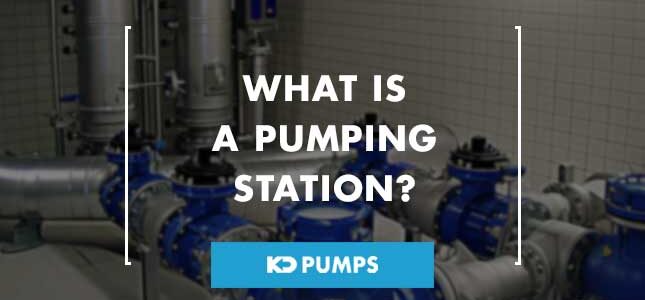
Comments are closed.